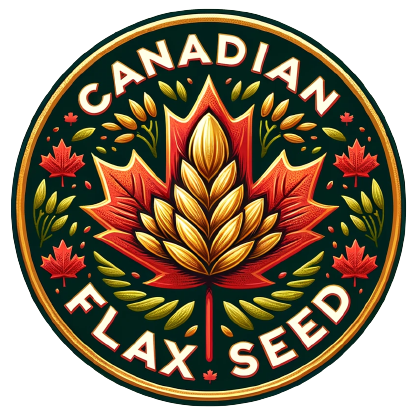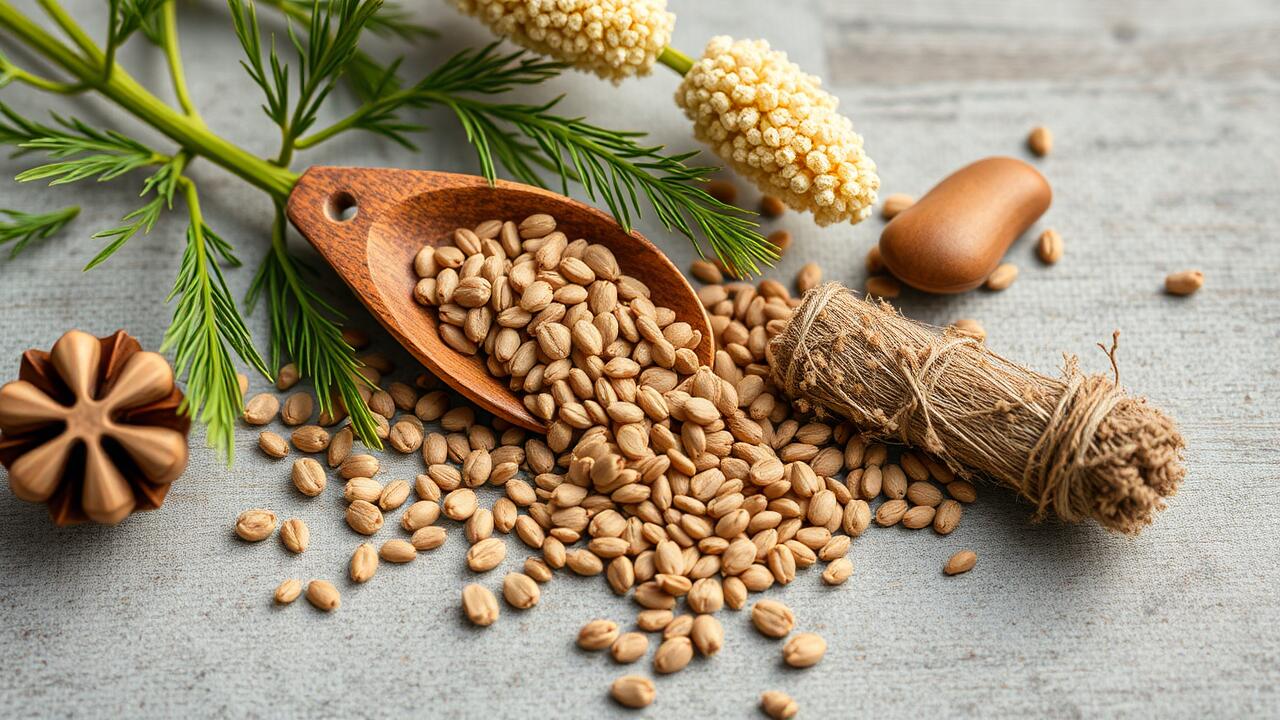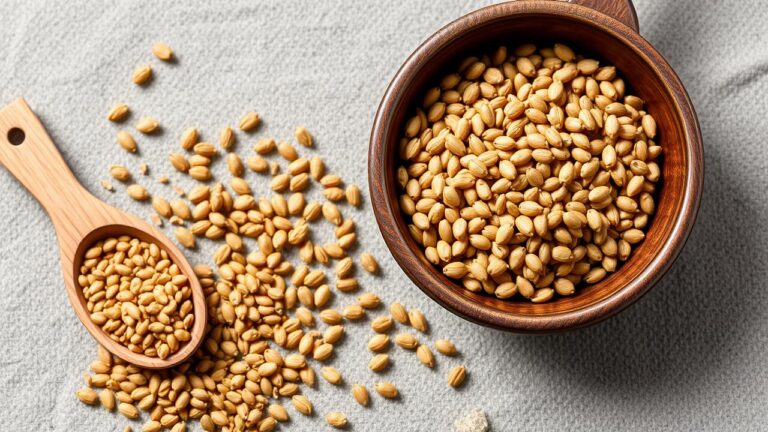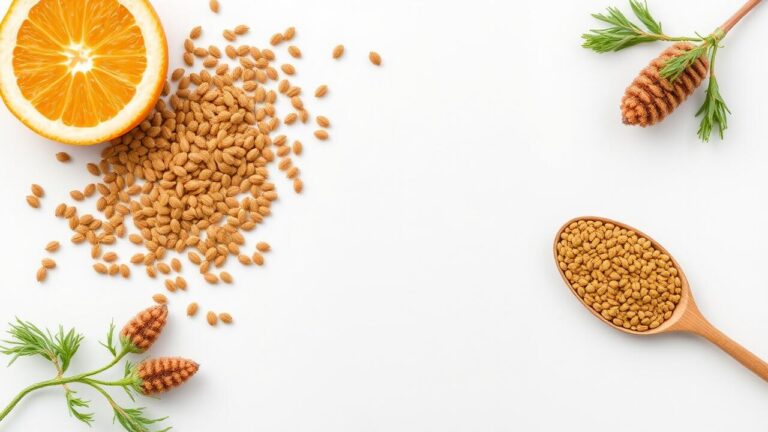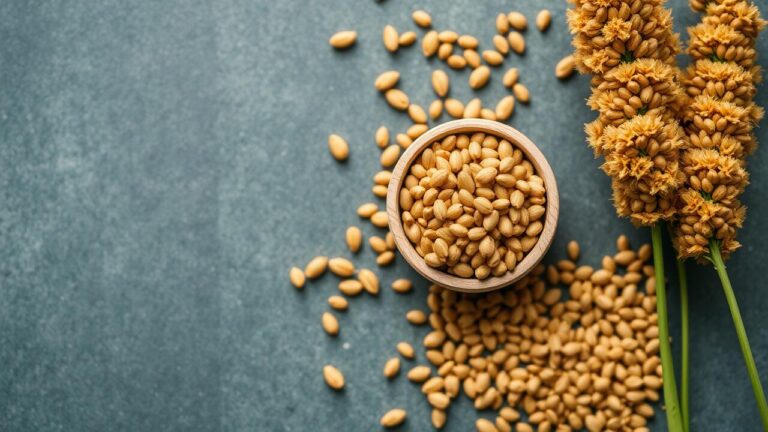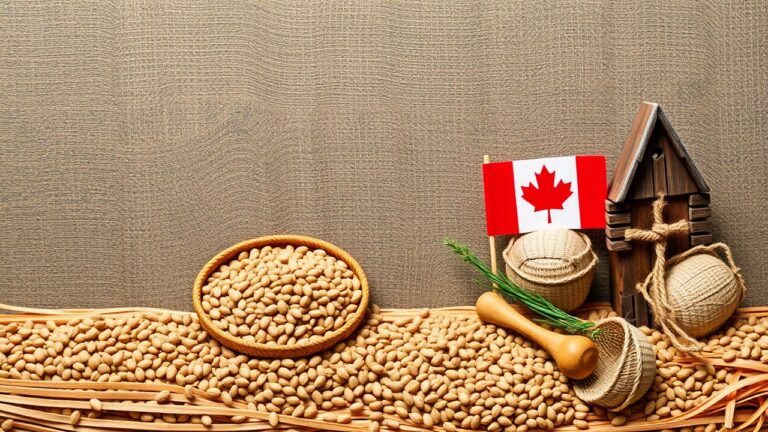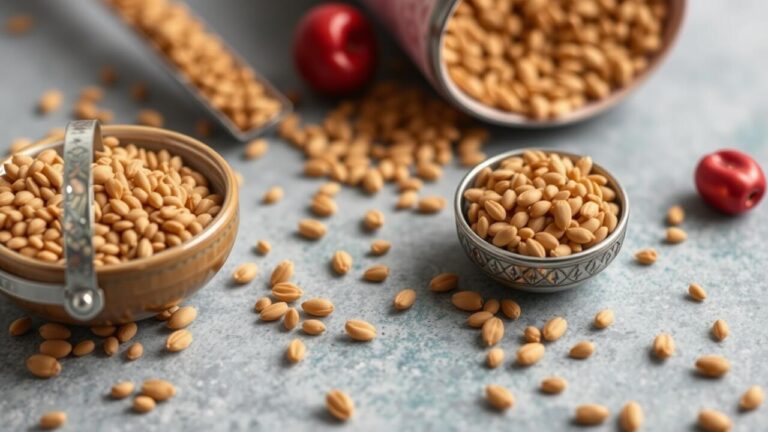Indigenous Origins: The Introduction of Flaxseeds to Canada
Table Of Contents
Discovering Indigenous Origins: The Introduction of Flaxseeds to Canada
Key Takeaways
- Historical background of flaxseeds in Canada and their initial introduction by Indigenous peoples.
- Farming techniques utilized by Indigenous communities for flaxseed production.
- Importance of flaxseeds as a nutritional component in Indigenous diets.
- Financial implications of flaxseed farming for local economies.
- Ecological benefits associated with the cultivation of flaxseeds.
Indigenous Origins: The Introduction Of Flaxseeds To Canada | Historical Context of Flaxseeds in Canada
The Indigenous Origins: The Introduction of Flaxseeds to Canada traces back to the moments when Indigenous peoples first cultivated this valuable crop. Flaxseeds, often referred to as common flax, became an integral part of their agricultural practices, particularly in Western Canada. These communities recognized the nutritional benefits and versatile applications of flaxseeds, which contributed significantly to their subsistence. As a result, the cultivation of flax evolved into a sustainable practice that not only supported local diets but also fostered a deep connection to the land. The history of flaxseed use highlights the profound relationship between Indigenous cultures and their environment, marking Canada’s agricultural landscape with rich traditions and practices.
Indigenous Origins: The Introduction of Flaxseeds to Canada | Early Use of Flaxseeds by Indigenous Peoples
The early use of flaxseeds by Indigenous peoples in Eastern Canada marks a significant chapter in the story of agricultural innovation. These communities cultivated wild flax and pale flax, taking advantage of the plant’s versatility. They utilized the seeds for their nutritional value, producing ground flaxseed and flaxseed oil, which played a crucial role in sustaining their diets and enhancing their culinary practices. The Canadian prairies also became a site for this cultivation, where the flaxen fibers were harvested for weaving and other cultural applications.
Traditional knowledge surrounding flax cultivation was passed down through generations, highlighting its importance in Indigenous cultures. The seeds were integrated into everyday meals, contributing essential nutrients. Flaxseeds found their way into various recipes, offering both sustenance and medicinal benefits. This early integration of flax into Indigenous diets showcases a profound understanding of local flora and its potential, setting the stage for the long-lasting relationship between people and this valuable crop in Canada.
European Exploration and Introduction of Flaxseeds
European explorers played a crucial role in the dissemination of flax (Linum usitatissimum) within North America. As they arrived, they encountered native peoples who had already been utilizing the plant, often referring to its use to create textiles and food sources. The explorers recognized the versatility of flax, which belongs to the flax family, and began to cultivate it for its seeds. This marked a significant moment in Indigenous Origins: The Introduction of Flaxseeds to Canada, as the merging of European agricultural practices with native methods intensified.
The introduction of flaxseed oil became a significant aspect of trade between European settlers and Native Americans. The health benefits associated with flax, including its rich omega-3 fatty acids, attracted the interest of both groups. As the collaboration between native peoples and explorers developed, perennial flax gained prominence, leading to a broader understanding of the plant’s utility. This exchange not only enriched the diets of various communities but also reshaped agricultural practices in Canada’s evolving cultural landscape.
Cultivation Practices of Indigenous Peoples
The cultivation of flax seeds by Indigenous tribes in Canada showcases a rich history rooted in the Indigenous Origins: The Introduction of Flaxseeds to Canada. Various tribes across regions like Ontario and Saskatchewan utilized flax seeds for both nutrition and textile production. The paleolithic practices of these communities involved traditional methods of growing flax, which allowed them to harness the benefits of flax fibers for crafting essential items. This deep connection to the land and its resources highlights the significance of flax in sustaining Indigenous lifestyles and cultures over generations.
Traditional Methods of Growing Flax
Indigenous peoples in Canada have long utilized traditional methods for growing flax, a species deeply rooted in the flora of North America. These practices date back to the Upper Paleolithic era, showcasing a connection to the land that persisted through the Neolithic period. Flax was particularly valued for its versatility, serving not only as a source of fiber for making straw but also as a nutritional asset. The cultivation of flax became an integral part of life on the prairies, potentially influencing the agricultural practices of later settlers.
The techniques employed by Indigenous communities often emphasized sustainable practices. Seeds were typically sown in well-prepared soil, allowing for optimal growth and yield. Careful attention to the environment ensured that the plants thrived, reflecting a profound understanding of local ecosystems. As European settlers arrived, they observed and adopted these methods, which facilitated the broader cultivation of flax and its products across Canada. This exchange of knowledge highlights the significance of Indigenous origins in the introduction of flaxseeds to Canada.
Significance of Flax in Indigenous Culture
Flax has deep roots in the culture and practices of Indigenous peoples, particularly in regions such as the prairies and Montana. Traditional flax cultivation can be traced back to Indigenous origins: the introduction of flaxseeds to Canada, where it served not only as a source of nutrition but also as a versatile plant for crafting. Farmers utilized flax fibers to create textiles and ropes, showcasing the multifaceted importance of this plant in their daily lives. The knowledge of traditional flax cultivation has been passed down through generations, reflecting a rich heritage tied to the land.
Flax seeds and their derivatives have played a vital role in the spiritual and practical aspects of Indigenous cultures in Canada. The early use of flax in ceremonies emphasized its significance beyond mere sustenance. As Indigenous origins: the introduction of flaxseeds to Canada became integrated into their agricultural practices, communities established strong connections to the plant. This relationship reinforced the importance of sustainable farming and respect for nature, embodying values that continue to resonate with Indigenous culture today.
The Role of Flaxseeds in Indigenous Diet
Flaxseeds have played a vital role in the diets of Indigenous peoples in Canada, particularly highlighted by their Indigenous Origins: The Introduction of Flaxseeds to Canada. Whole flaxseeds are rich in essential nutrients, contributing significantly to overall health. Flaxseed contains omega-3 fatty acids, fiber, and lignans, making it a valuable addition to traditional diets. In regions such as Saskatchewan, flax cultivation has been integral, with Saskatchewan flax farmers embracing both ancient practices and modern agricultural techniques. The pale flax varieties that thrive in these areas are particularly prized for their nutritional benefits, serving as a cornerstone for Indigenous culinary traditions. Through careful cultivation and usage of cultivated flax, Indigenous communities have preserved a connection to their heritage while promoting a healthy lifestyle.
Nutritional Benefits of Flaxseeds
Flaxseeds have long been recognized for their exceptional nutritional profile, dating back to their Indigenous origins. The introduction of L. usitatissimum to Canada in 1617 opened the door to a range of health benefits associated with these seeds. Ground flaxseed supplies a rich source of omega-3 fatty acids, lignans, and dietary fiber. Both flax farmers and Indigenous communities have harnessed these nutritional benefits, making flax products an integral component of a balanced diet.
The versatility of flaxseeds allows for numerous culinary applications. Incorporating ground flaxseed into daily meals enhances nutrient intake while promoting digestive health. Rich in antioxidants, flaxseeds contribute to reducing inflammation and supporting heart health. This powerful grain not only demonstrates the remarkable qualities of Canadian grain but also reflects its importance in the sustenance and wellness of those who have cultivated and consumed it since its early arrival.
Culinary Applications of Flaxseeds in Traditional Recipes
The culinary history of flaxseeds traces back to Indigenous origins in Canada, where native tribes utilized the flax plant for various purposes. Traditional recipes often incorporated normal flaxseed as a nutritional enhancer, providing essential omega-3 fatty acids and fiber. The native Montana species of flax contributed not only to the diet but also served as a source of oil and meal. These ingredients found their way into everyday dishes, showcasing the versatility of flaxseed solutions throughout indigenous cooking.
Indigenous communities cultivated flax production with a deep understanding of its benefits. Flaxseeds were frequently ground into meal and used in baking, enriching bread and other staple foods. The total flax harvested went beyond sustenance, representing a connection to cultural identity. As Indigenous origins remind us of the importance of flaxseeds in traditional recipes, they continue to inspire modern culinary creations that honor this ancient knowledge.
- Flaxseeds can be used as an egg substitute in baking, providing moisture and binding properties.
- Ground flaxseed can be added to smoothies for a nutritional boost.
- Flaxseed oil is often used in salad dressings, lending a nutty flavor.
- Incorporating flaxseed meal into pancakes or waffles enhances the nutritional profile.
- Flaxseeds can be sprinkled on yogurt or oatmeal for added texture and health benefits.
- Traditional porridge recipes can be enriched with ground flaxseeds for improved fiber content.
- Flaxseeds can be used in savory dishes, such as sprinkled over roasted vegetables for added crunch.
The Economic Impact of Flaxseed Cultivation
The cultivation of flaxseeds in Canada has deep roots that trace back to the Indigenous origins: the introduction of flaxseeds to Canada, where neolithic cultures first recognized the plant’s potential. This early understanding laid the groundwork for various flax landraces that adapted to the Canadian climate, showcasing the versatility of this crop. Flax lies not only in its agricultural significance but also in its economic impact, bringing together traditional practices and modern commercialization. As cultures evolved, the processing of ground flax became integral to local economies, providing a natural world connection that emphasized sustainability. The legacy of flax cultivation reveals its dual role in both cultural identity and economic vitality, rooted firmly in the Indigenous origins: the introduction of flaxseeds to Canada.
Trade and Exchange of Flaxseed Products
The trade and exchange of flaxseed products in Canada have deep roots in the Indigenous origins of this vital crop. Native communities were adept at cultivating flax, taking advantage of the untouched-by-European-settlers prairies to grow average flax. Historical evidence suggests that prehistoric sites in the region indicate a longstanding relationship between Indigenous peoples and this versatile plant. The introduction of flaxseeds to Canada played a significant role in establishing trade networks among Indigenous groups, enhancing their economy and providing various uses for the plant.
As interactions with European explorers increased, the significance of flaxseed products grew within Indigenous trade. The high value of flax for its fibers and seeds made it an essential commodity in exchanges between native populations and European settlers. This dynamic contributed to the spread of flax cultivation across the country, transforming local economies. The exchange of flaxseed products not only honored the original Indigenous practices but also allowed for adaptations that enriched both Indigenous and settler communities.
Modern Commercialization of Flax in Canada
The history of flax in Canada can be traced back to its Indigenous origins. The introduction of flaxseeds to Canada was instrumental for various Indigenous cultures, who recognized the value of the flax plant bloom for both medicinal and practical uses. As colonists arrived, they saw the potential of this crop, integrating it into their agricultural practices. The adaptability of flax to diverse Canadian climates facilitated thriving cultivation, leading to the production of flax bales that became an important economic commodity.
The expansion of flax cultivation in Canada has since gained attention from western countries seeking natural and sustainable raw materials. Today, the industry not only values its historical roots but also emphasizes the significance of native wildflowers in promoting biodiversity. The journey from Indigenous origins to contemporary commercialization reflects a rich tapestry of cultural exchange and agricultural innovation that continues to evolve in Canada’s diverse landscapes.
| Flax Product | Uses | Market Value (CAD) |
|---|---|---|
| Flaxseed Oil | Food supplement, cooking oil, cosmetics | $500 million |
| Flaxseed | Baking, health foods, livestock feed | $300 million |
| Flax Fiber | Textiles, biodegradable plastics, paper products | $200 million |
| Flax Meal | Baking ingredient, nutritional supplement | $100 million |
Environmental Significance of Flaxseeds
Flaxseeds, particularly from the blue flax plant, hold significant environmental importance that traces back to their Indigenous origins in Canada. The introduction of flax to western North America not only provided vital nutritional and economic benefits but also promoted sustainable agricultural practices. Indigenous peoples cultivated flax fiber from the plant, utilizing it for textiles and other materials while ensuring its ecological viability within their homelands. This beautiful country, rich in diverse ecosystems, has seen the integration of flax cultivation as a means of fostering environmental sustainability, showcasing the enduring legacy of Indigenous practices in nurturing the land.
- Flaxseeds support soil health through crop rotation and their ability to improve soil structure.
- They require less water compared to other oilseed crops, making them a more sustainable choice in water-scarce regions.
- The cultivation of flax can help reduce greenhouse gas emissions by sequestering carbon in the soil.
- Flax plants are beneficial for biodiversity, attracting pollinators and other beneficial insects.
- The by-products of flax cultivation, such as seed meal, can be used as natural fertilizers, reducing chemical inputs in farming.
- Flaxseeds contribute to a lower carbon footprint in food production, promoting environmental responsibility.
- Their versatility in uses—from food to fiber—reduces reliance on single-crop farming practices, enhancing ecosystem resilience.
Sustainable Agriculture Practices
The cultivation of flaxseed, specifically the varieties Linum angustifolium and Linum usitatissimum, reveals a deep-rooted connection to the land and its Indigenous origins in Canada. The prairies served as fertile territory for these plants, with Indigenous peoples utilizing their fibers and seeds for various purposes. Practices surrounding flaxseed cultivation often reflect a storied family history, where generations passed down knowledge and techniques, ensuring sustainable food sources in regions like Saskatchewan. These methods underscore a commitment to ecological balance and respect for the land.
Traditional agricultural practices emphasize the importance of maintaining soil health and biodiversity, aligning with sustainable agriculture principles. Through careful stewardship and awareness of environmental impacts, Indigenous communities have demonstrated how to cultivate flaxseeds effectively. This approach not only honors the Indigenous origins of flaxseeds in Canada but also contributes to healthier ecosystems. The cultivation of these crops supports local food systems while preserving the cultural heritage intertwined with the growing of flax in the northern territories.
Conclusion
Indigenous Origins: The Introduction of Flaxseeds to Canada illustrates a rich tapestry of cultural and agricultural practices that have evolved over the years. The significance of flaxseeds transcends mere cultivation, as they have played an essential role in the diets and economies of Indigenous communities. Understanding the historical context of how flax was introduced and its subsequent adaptation highlights the interconnectedness of Indigenous knowledge and contemporary agricultural practices. As the world moves toward sustainable practices, the lessons learned from these Indigenous origins remain relevant, emphasizing the importance of preserving traditional knowledge while embracing modern innovations in flaxseed cultivation and use.
FAQS
What is the historical significance of flaxseeds and flaxseed oil in Canada, particularly regarding their introduction and cultivation in Saskatchewan?
Flaxseeds and flaxseed oil have a rich history in Canada, beginning with the introduction of L. usitatissimum to Canada in 1617. Saskatchewan farm flax became a crucial crop as it allowed farmers to utilize flax straw, contributing to the local economy. The flax start in Canada has made Saskatchewan a key player in the production and care of this valuable crop, highlighting its importance in the agricultural landscape.
When did the cultivation of flax, specifically L. usitatissimum, begin in Canada and what role did Saskatchewan play in its food care?
The cultivation of flax, specifically L. usitatissimum, was initially introduced to Canada in 1617, and Saskatchewan has played a significant role in the food care of flax as it became a major area for its farming and production over the years, contributing to its importance in Canadian agriculture.
What was the beginning of the introduction of L. usitatissimum to Canada, and how did Saskatchewan contribute to the cultivation of flax and its role in food care?
L. usitatissimum was initially introduced to Canada in 1617, marking the beginning of its cultivation, especially in Saskatchewan. This province played a crucial role in the development of flax as a significant agricultural product and contributed to its importance in food care within the region.
What were the early developments in the cultivation of flax in Canada, and how did Saskatchewan influence its importance for food care?
The beginning of flax cultivation in Canada was crucial, particularly in Saskatchewan, which played a significant role in promoting flax as an essential crop. The growth of flax in Saskatchewan not only marked the beginning of its agricultural journey in Canada but also emphasized its value in food care due to its nutritious properties and high oil content.
How did the introduction of flax and its cultivation in Saskatchewan contribute to food care in Canada from the beginning?
The beginning of flax cultivation in Canada significantly impacted food care, particularly in Saskatchewan, where flax played a crucial role in agricultural development and contributed to various food care practices through its nutritional benefits and versatile applications.
How did the journey of flax from its introduction to its cultivation in Saskatchewan mark the beginning of its significance for food care in Canada?
The journey of flax in Canada began with its introduction, which was crucial for food care, particularly in Saskatchewan. This province played an essential role in the cultivation of flax, establishing its importance for food care across Canada from the beginning.
How did the beginning of flax cultivation in Saskatchewan shape its role in food care within Canada?
The beginning of flax cultivation in Saskatchewan was pivotal as it established the region as a major player in Canada’s agricultural landscape, enhancing food care through the introduction of flax. Flax, known for its nutritional benefits, played a significant role in improving food care practices in Canada by providing essential nutrients and promoting health through its oil and seeds.
How did the introduction of flax in Canada, particularly in Saskatchewan, mark the beginning of its importance for local food care?
The introduction of flax in Canada marked a significant beginning for its cultivation, especially in Saskatchewan, where it played a crucial role in food care by providing a nutritious source of flaxseed that contributed to local diets and agriculture.
How did the cultivation of flax in Saskatchewan represent a significant milestone in Canada’s food care practices from the beginning?
The beginning of flax cultivation in Saskatchewan was vital for Canada, as it helped establish flax as an important crop. This development significantly enhanced food care practices in Canada, particularly by providing a source of essential nutrients through flax seeds and flaxseed oil.
What role did Saskatchewan play in the beginning of flax cultivation in Canada and its impact on food care practices?
Saskatchewan played a crucial role in the beginning of flax cultivation in Canada, establishing itself as a significant area for growing flax, which contributed to the development of food care practices. The province’s efforts in cultivating flax helped shape its importance in the overall food care system in Canada.
